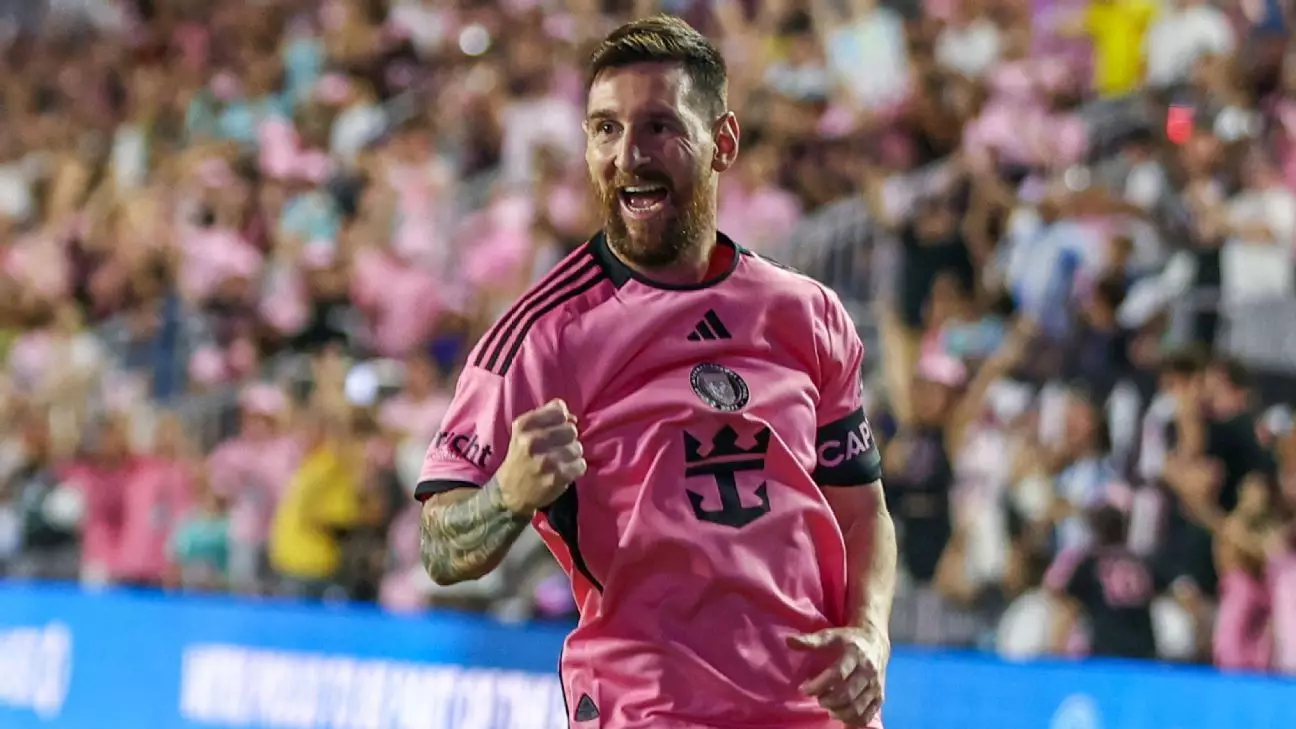The landscape of Major League Soccer (MLS) has been irrevocably altered, largely thanks to the high-profile arrival of Lionel Messi at Inter Miami. As the latest financial statistics released by the MLS Players Association (MLSPA) reveal a striking 9.7% increase in average player salaries, the implications of this surge are felt throughout the league. Messi’s presence not only elevates the financial stakes but also paints a vivid picture of the sport’s evolving dynamics in North America.
Lionel Messi’s reported annual salary of $20.4 million underscores his standing as one of soccer’s most lucrative signings. When considering the entirety of his earnings, including a share from the league’s lucrative Apple TV deal, estimates place his total compensation between a staggering $50 million and $60 million. This astonishing figure dwarfs the total payrolls of 22 other teams in the league, exemplifying both Messi’s draw and the financial might of Inter Miami. With such monetary clout, Messi is not simply a player; he is a catalyst for growth within MLS, potentially altering team valuations and attracting fresh investors.
Inter Miami’s performance further emphasizes the reciprocal relationship between financial investment and success on the field. After winning the Supporters’ Shield and setting a new MLS points record with 74, Messi’s influence mounted, especially seen in his eye-popping 11-minute hat trick that propelled the team to a dominant 6-2 victory over the New England Revolution. Such achievements validate the extensive spending which, at $41.7 million, exceeds the budget of 23 out of the 29 teams. However, the results illuminate a critical reality: money does not guarantee success, as illustrated by four out of the league’s ten highest-spending teams missing out on postseason opportunities.
Beyond the spotlight on Messi, the MLS presents a broader narrative of increasing salaries across the board. The average guaranteed base compensation for players has surged to $596,226, showcasing an upward trend that reflects the league’s growing aspirations. This change benefits not only star players but also those at the lower end of the pay scale, with median guaranteed base compensation rising to $308,375. Such improvements indicate a commitment from both MLS and the MLSPA to sustain a competitive and equitable environment.
The ongoing collective bargaining agreement, established in February 2021 and lasting through 2027, serves as a foundation for these developments. The league’s commitment to enhancing player compensation is not only a hallmark of their ambition but also a strategic approach to retaining emerging talent. As player salaries continue to flourish, the league transforms into a more attractive destination for international stars seeking opportunities in North America.
Investment Patterns: A Tale of Two Stories
Despite the increasing financial prowess demonstrated by top teams, an apparent disparity exists regarding spend utilization. The gulf between Inter Miami’s aggressive financial strategy and the frugal approaches of lower-tier clubs like CF Montreal represents a broader conversation on financial equity. With reported spending of $11.43 million, Montreal trails the league while simultaneously illustrating a variation in club philosophies. A stratified structure of spending siloes the league into high-rollers and budgets, with implications on competitive balance as well.
Notable recent acquisitions, such as Olivier Giroud’s contract with LAFC for $3.7 million annually, denote a shift toward integrating proven international talent within clubs that may not have historically attracted such caliber players. However, while investment in high-profile players can draw attention, clubs must also put in place systems that foster sustainable talent development.
As MLS continues to mature and evolve, the choices made in the next few seasons will shape its identity. The significant rise in average player salaries and Messi’s revolutionary impact has set the league on a trajectory towards unparalleled international attention. While the symbiosis between salary spending and on-field results remains complex and multifaceted, the possibility of enhanced competition is palpable.
The immediate future awaits the continued balancing act between facilitating superstar signings and nurturing homegrown talent. As the MLS ambitiously builds, it invites scrutiny regarding its fiscal strategies and competitive integrity. One thing is certain: the evolution of MLS is in an exciting chapter, where Lionel Messi’s bold step shines brightly on a path ripe for exploration, potential, and evolution.

Leave a Reply